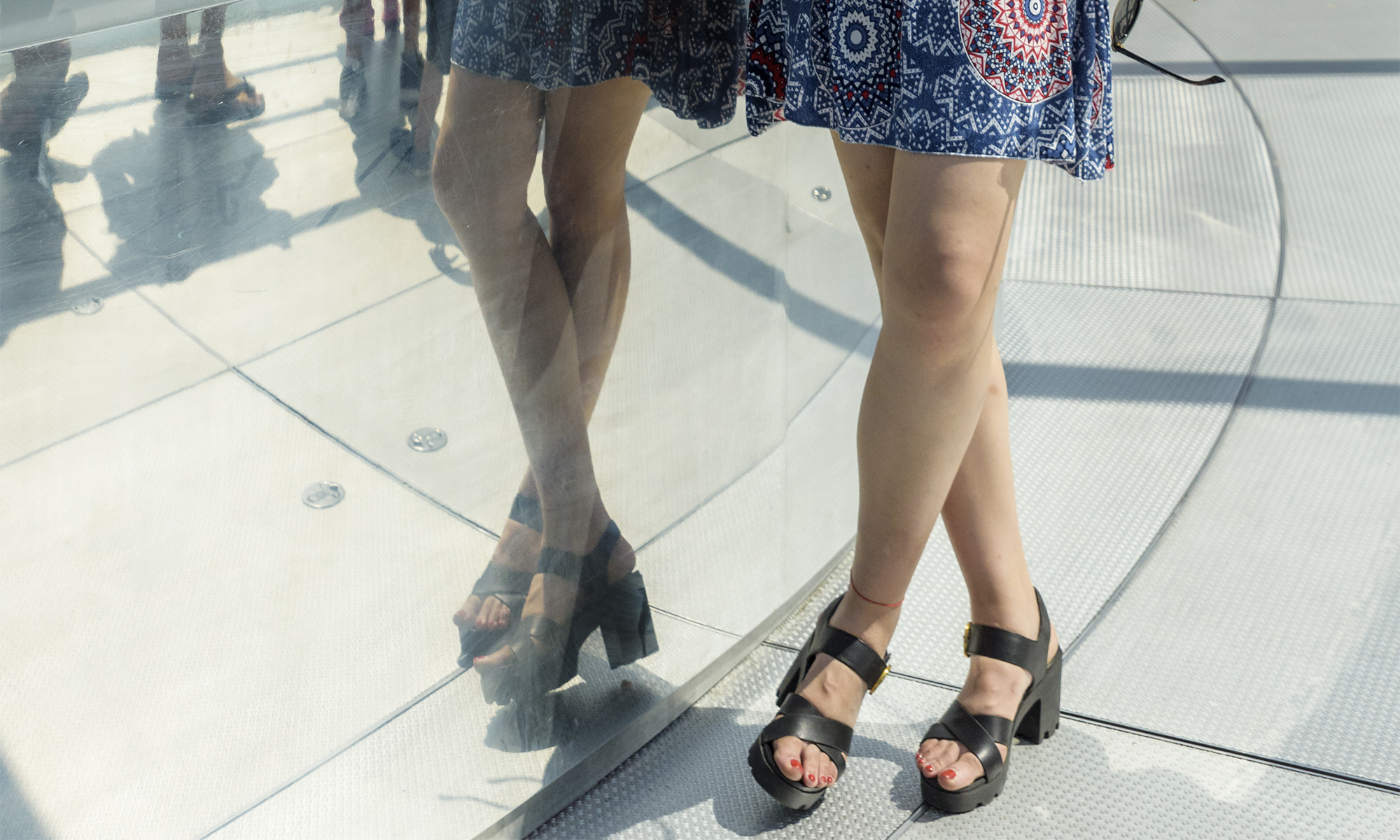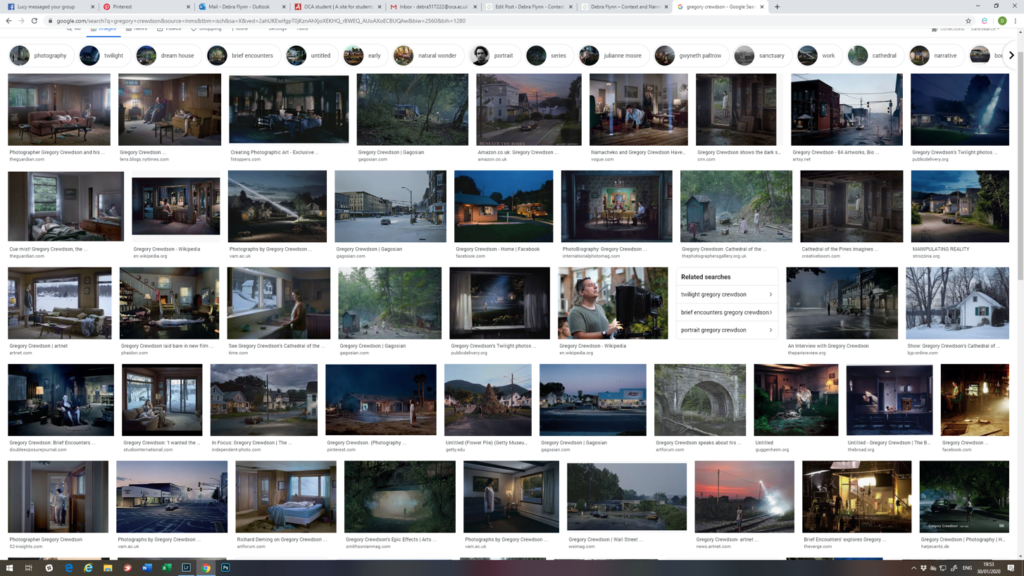Research point
Look up the work of Gregory Crewdson online.
Watch this YouTube video about Gregory Crewdson and his work and consider the
questions below.
www.youtube.com/watch?v=S7CvoTtus34&feature=youtu.be [accessed 24/02/14]
- Do you think there is more to this work than aesthetic beauty?
- Do you think Crewdson succeeds in making his work ‘psychological’? What does this mean?
- What is your main goal when making pictures? Do you think there’s anything wrong with making beauty your main goal? Why or why not?
Crewdson’s work is deliberately cinematic in style and as a result is often very popular in
commercial settings. The dark nights, the heavy lights and the perfectly styled locations
and actors aren’t meant to fool us into believing those moments are real, but rather they
seduce us into entering the world of fiction. This visual strategy of elaborate direction,
as in film, makes us lose our sense of reality and become absorbed with the alternative
reality we’re faced with. Some commentators regard this is an effective method of
image-making, but for others it lacks the subtlety and nuance of Wall and DiCorcia’s
work. What do you think?
A lot of Crewdson’s images are created a twilight, which he says he has always had a fascination of that time of day. It seems that it kind of represents the subject matter too. His images are on the cusp of reality and surrealism, I think that’s what makes a them ‘psychological’. We know that what we looking at isn’t real, but it’s close enough for us to question it. The half light also adds to that eerie feeling.
I don’t think there is anything wrong with making your main goal about beauty if that’s what you want. My tutor said to me after one of my assignments, that I should consider how I want to display my work as part of the planning. So if your goal is to make a piece of art that decorates a room, then mere beauty may be all you need. Besides not all real life is dark and miserable, it’s good to depict the beautiful things around us, why can’t an image be both ‘real’ and beautiful. I personally don’t find Crewdson’s images ‘beautiful’, but I do like the surrealism of them and it’s something I often create in my own images, by adding things that aren’t really there:







